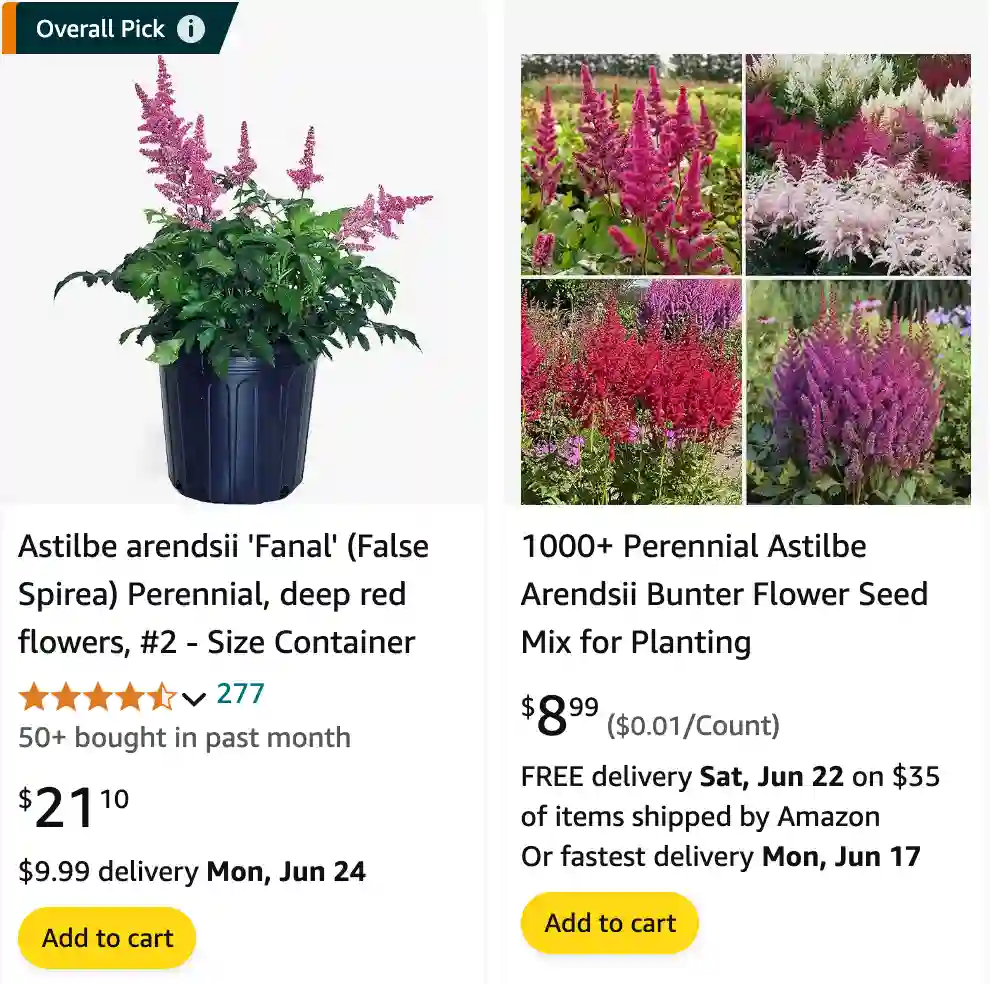
January 10 – Astilbe
“Astilbe’s feathery elegance represents the spirit of those born on January 10.”
You are graceful and refined, like the soft plumes of Astilbe. Your presence is soothing, and your ability to adapt to different environments highlights your versatility and charm.
All About Astilbes: A Shade-Loving Charmer by Ferb Vu
Astilbes belong to the Saxifragaceae family, have been a mainstay in my shade garden for years. Their graceful plumes of flowers and lush foliage add a touch of elegance and texture to any shady corner. Over the years, I’ve learned a lot about these low-maintenance beauties, and I’m here to share my knowledge with you.
What are Astilbes?
Astilbes are herbaceous perennials, meaning they die back in the winter and return year after year. Native to East Asia and North America, they’re known for their feathery flower plumes that come in a range of colors, from soft pinks and lavenders to deep reds and whites. Their fern-like foliage adds another layer of interest, creating a lush backdrop for the blooms.
Astilbe species
- Astilbe × amabilis H.Hara
- Astilbe apoensis Hallier f.
- Astilbe biternata (Vent.) Britton
- Astilbe chinensis (Maxim.) Franch. & Sav. Plant FAQs: Astilbe Chinensis
- Astilbe crenatiloba (Britton) Small
- Astilbe formosa (Nakai) Nakai
- Astilbe glaberrima Nakai
- Astilbe grandis Stapf ex E.H.Wilson
- Astilbe hachijoensis Nakai
- Astilbe japonica (C.Morren & Decne.) A.Gray
- Astilbe koreana (Kom.) Nakai
- Astilbe longicarpa (Hayata) Hayata
- Astilbe longipedicellata (Hatus.) S.Akiyama & Kadota
- Astilbe longipilosa Gilli
- Astilbe macrocarpa Knoll
- Astilbe macroflora Hayata
- Astilbe microphylla Knoll
- Astilbe okuyamae H.Hara
- Astilbe papuana Schltr.
- Astilbe philippinensis L.Henry
- Astilbe × photeinophylla Koidz.
- Astilbe platyphylla H.Boissieu
- Astilbe rivularis Buch.-Ham. ex D.Don
- Astilbe rubra Hook.f. & Thomson
- Astilbe shikokiana Nakai
- Astilbe simplicifolia Makino
- Astilbe taquetii (H.Lév.) Koidz.
- Astilbe thunbergii (Siebold & Zucc.) Miq.
- Astilbe tsushimensis Kadota
- Astilbe uljinensis B.U.Oh & H.J.Choi
Astilbe vs Celosia
I love the delicate, feathery plumes of Astilbe, but the vibrant, flame-like flowers of Celosia add such a striking pop of color to my garden.
Astilbe vs Goatsbeard
Astilbe’s soft, elegant blooms make a beautiful contrast to the bold and towering presence of Goatsbeard.
Astilbe vs Aruncus
While Astilbe has a more refined and ornamental appeal, Aruncus, with its larger, more imposing flower clusters, makes a grand statement in the garden.
Astilbe vs False Spirea
Comparing Astilbe to False Spirea, I find Astilbe’s delicate, airy flowers more charming and versatile for various garden spots.
Astilbe vs Poison Ivy
Astilbe’s gentle beauty and non-toxic nature are always welcome in my garden, unlike the dreaded Poison Ivy, which I avoid at all costs.
How to grow Astilbes?
Astilbes thrive in partial to full shade. They’ll tolerate some morning sun, but afternoon sun can scorch the leaves and dry out the soil. When choosing a location, consider the amount of sunlight your garden receives throughout the day.
Planting: Plant your astilbes in early spring or fall. Choose a spot with moist, well-draining soil. Amending the soil with compost or aged manure before planting will help retain moisture and provide essential nutrients. Dig a hole twice the width of the root ball and plant the crown (the point where the roots and stems meet) slightly below the soil surface. Water thoroughly after planting and keep the soil moist throughout the growing season.
Watering: Astilbes love moisture. Aim for consistent watering, especially during hot and dry periods. A good soak every few days is better than frequent shallow watering. Mulching around the base of the plant will help retain moisture and suppress weeds.
Feeding: Astilbes aren’t heavy feeders, but a light application of balanced fertilizer in early spring can encourage healthy growth and flowering.
How to care for Astilbes?
Astilbes are relatively low-maintenance plants. Here’s what you need to know:
- Deadheading: Removing spent flower stalks can encourage reblooming and keep your plants looking tidy. However, don’t deadhead too late in the season, or you may risk removing flower buds for the following year.
- Dividing: Astilbes can get crowded over time. Dividing them every 3-4 years will help maintain their vigor and flowering. Divide in early spring or fall, using a sharp knife to cut through the root ball.
- Winter Care: Once the foliage dies back in fall, cut the stems back to a few inches above the ground. Apply a layer of mulch around the base of the plant to protect the roots from freezing temperatures.
Astilbes: More Than Just a Pretty Face
Astilbes offer a multitude of benefits beyond their beauty:
- Pollinators: Astilbes attract butterflies, hummingbirds, and bees, adding to the biodiversity of your garden.
- Cut Flowers: The long-lasting blooms of astilbes make them excellent cut flowers. Simply cut the stems just as the flowers begin to open and enjoy them in a vase indoors.
- Low Maintenance: Astilbes are a great choice for busy gardeners. They require minimal care once established.
Conclusion: Astilbes for a Flourishing Shade Garden
Astilbes are a versatile and rewarding addition to any shade garden. With their easy-going nature and beautiful blooms, they’re sure to become a favorite in your garden. So, head to your local nursery and find the perfect astilbe to add a touch of elegance and charm to your shady haven.
If i die, water my plants!



